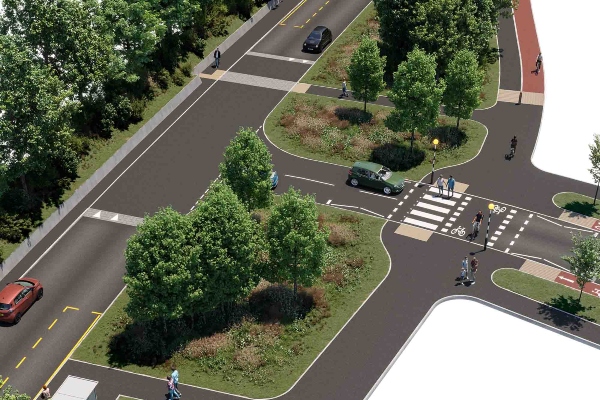New guidelines for developers to help them design sustainable and low-carbon neighbourhoods have been launched by Suffolk County Council.
The Suffolk Design: Streets Guide is the first document of its kind to prioritise walking and cycling in the routes people will use – and the infrastructure required to make them safe and attractive – over the needs of private vehicles.
The guide can also be used by highway engineers, drainage engineers and public rights of way officers in responding to planning applications and in the technical review and approval of new highways infrastructure.
While not compulsory, the guide has been prepared with Suffolk’s other authorities using government policies, guidance, and best practice.
It replaces the Suffolk Design Guide for Residential Areas, last updated in 2000, and has been drawn up in partnership with Stantec.
In 2019, every local authority in Suffolk declared or acknowledged a climate emergency.
The design of streets has a significant role to play in the reduction of carbon emissions by prioritising walking, wheeling, cycling and access to public transport, as well as managing the effects of flooding through effective sustainable drainage systems.
By placing greater priority on designing for people as pedestrians – whether wheeled or walkers – and cyclists, the council is contributing to its ambitions for reducing carbon.
Councillor Richard Smith, Suffolk County Council cabinet member for economic development, transport strategy and waste, said: “Streets are more than just routes to travel or park, they provide places to enjoy, where people meet and socialise, they define the character of our towns and villages and support how our utilities are provided underground to our homes and businesses.
“All these different elements need careful consideration as we look forward to a low carbon future and adapt to climate change, so in this context, a street design guide needs to be much more than a prescriptive guidance document.
“It needs to provide a basis for designers to interpret and deliver streets and places that reflect much broader objectives such as increasing social value, better accessibility, helping to achieve a low carbon future, ensuring better air quality and enhanced biodiversity.”
Wesley Wroe, community development associate at Stantec, said: “Our urban spaces must be responsive to the changing environment, which means designing in a way which creates places resilient to the effects of climate change but also support an ageing population and encourage healthier lifestyles.
“The guide breaks new ground by moving from a street hierarchy based on vehicles to one that incorporates the wider needs of people, recent Government guidance on inclusive mobility and cycling, and the user hierarchy in the most recent change to the Highway Code.
“We’re hoping other local authorities follow Suffolk County Council’s lead and ensure the guidance they offer supports more resilient, sustainable, and equitable places.”
The new document can be found here.
Image source: Stantec
© Eastern Echo (powered by ukpropertyforums.com).
Sign up to receive your free bi-weekly Eastern Echo journal here.









